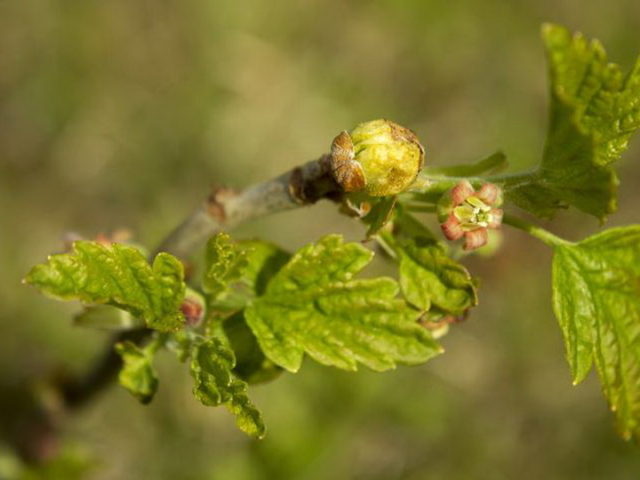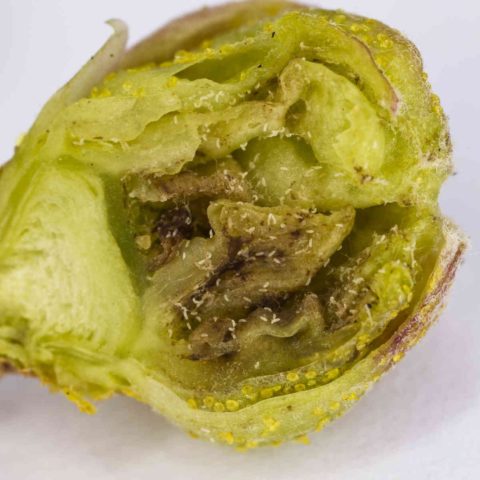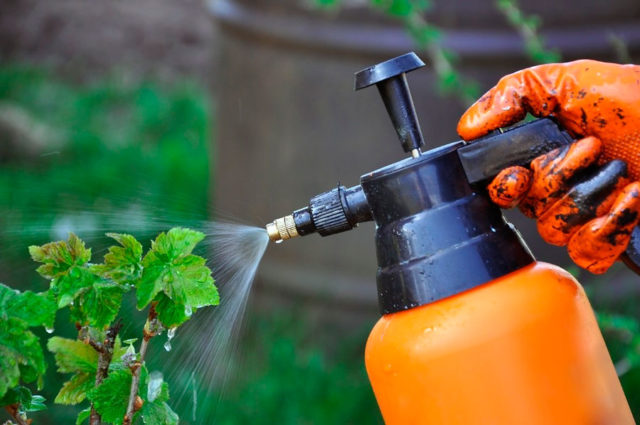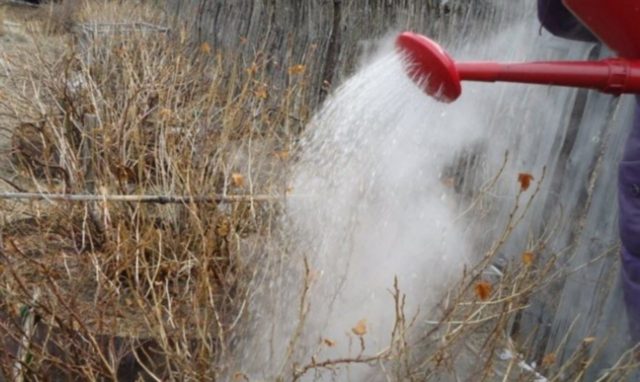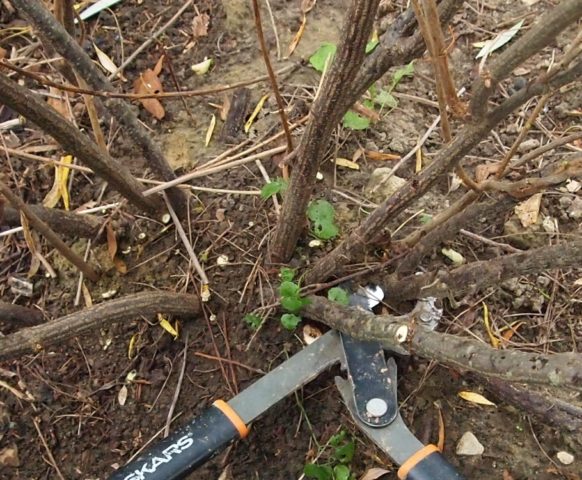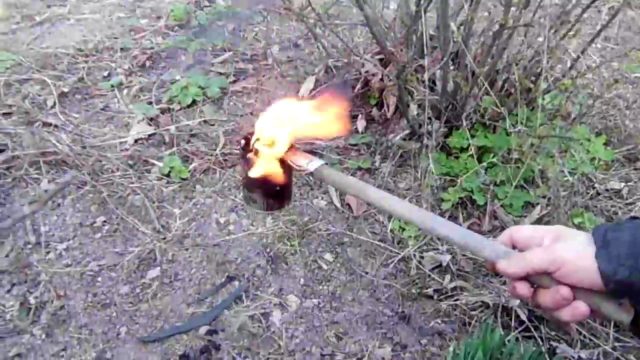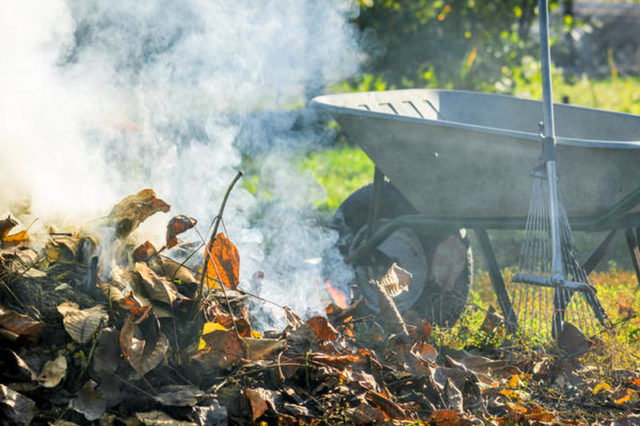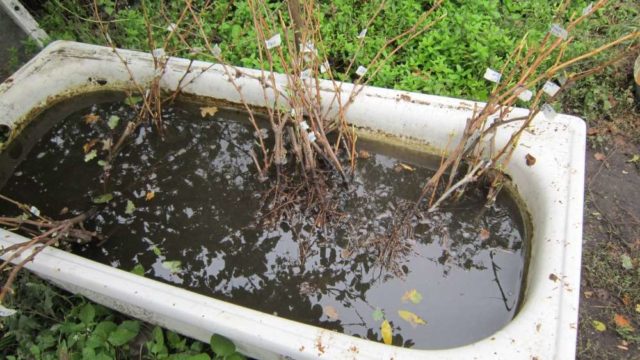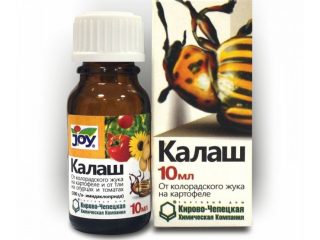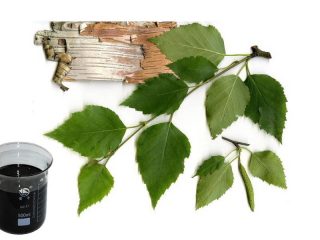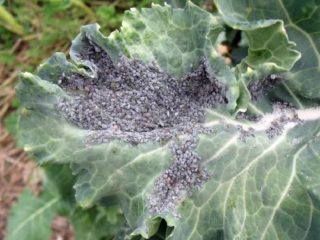Content
- 1 Round buds on currants - what is it
- 2 Signs of a kidney mite on currants
- 3 Why is a kidney mite dangerous for currants?
- 4 Remedies for kidney mites on currants
- 5 Agrotechnical measures to combat currant kidney mites
- 6 How to deal with a kidney mite on currants
- 7 Kidney mite resistant currant varieties
- 8 Preventive actions
- 9 Conclusion
For berry bushes, including currants, one of the most common pests was and remains a kidney mite. Despite all the measures taken by both breeders and gardeners, this harmful insect appears on the bushes with enviable regularity. Therefore, the currant bud mite and the fight against it are one of the most pressing issues for those who like growing these berry bushes.
Round buds on currants - what is it
Normal buds on currants have an egg-shaped pointed shape and are small in size. They are evenly distributed along the entire length of the shoot, gradually decreasing towards its end. In comparison with them, much larger round buds, resembling a cabbage head in structure, can sharply stand out on currants. Their appearance indicates the presence of a kidney mite on the currant. Large rounded buds are the place where the pest settles, it is from here that it begins to spread throughout the plant.
The pest itself is quite difficult to recognize with the naked eye, its dimensions do not exceed 0.2 mm. At the same time, up to 8 thousand individuals can develop in an infected kidney, which is why it acquires such "bloated" forms.
Signs of a kidney mite on currants
Best of all, currant bushes infected with a tick become visible in the fall, after flying around the leaves. At this time, swollen, rounded buds, in which sexually mature tick females remain for the winter, are very clearly visible against the background of the rest. The same picture is observed in early spring.
After the appearance of leaves, the appearance of a tick can be detected by indirect signs. Like many sucking insects, these arthropods are carriers of serious viral diseases. If the leaves begin to curl on the currant, their color and structure change, the shoots are deformed and "witch's brooms" appear on them, then we can talk about the infection of the bush with inversion, mosaic of leaves or terry. In this case, it is useless to fight a tick, since the disease will still kill the currants. The bush is simply uprooted and burned.
Why is a kidney mite dangerous for currants?
The microscopic size of one tick individual is more than compensated for by its fertility. In just 1 season, the female of this insect is able to reproduce offspring up to 5 times, increasing its number to 40 thousand during this time. Settling through the bush, the mites feed on plant juices, making numerous punctures in the buds, leaves, and young shoots. The photo of the kidney mite population inside the blackcurrant bud is below.
Currant systematically lacking nutrients is strongly inhibited. If you do not take any measures against the tick, the constantly increasing number of ticks will simply kill it in just 1 season. That is why this insect is one of the most dangerous pests.
Remedies for kidney mites on currants
The mite spends the vast majority of its existence inside currant buds.This makes it difficult to combat it, since the insect is actually isolated from the external environment. However, there are several ways to deal with kidney mites on currants. These include the following:
- preventive (including agrotechnical);
- mechanical;
- folk;
- biological;
- chemical.
Preventive and agronomic measures are a good way to avoid kidney mite infestation of currants, but they do not always guarantee a positive result.
Chemical preparations for kidney mites on currants
Chemical preparations for kidney mites on currants are a fairly effective measure, but it is advisable to use them only when all other methods have already been tested and have not brought the desired result. It must be remembered that the kidney mite is an arthropod insect, so ordinary insecticides are not suitable for it. The following acaricides and insectoacaricides are used to process currants:
- Actellic.
- Apollo.
- Vermitic.
- Kinmix.
- Contos.
- Movento.
- Neoron.
- Nessoran.
- Oberon.
- Forbid 4F.
- Endidor.
All these drugs do not have a strong long-term effect. They are used at least twice, in the period before the onset of the budding phase. The interval between spraying should be at least 10-12 days.
More effective is the treatment of currants from a kidney mite with phosphorus-containing acaricides. These drugs are more powerful, but they can be used only after harvest, in the fall. These tools include the following.
- Accent.
- BI-58.
- Dimetrin.
- Nitrafen.
- Pilarmax.
- Rogor-S.
- Sun Mayt.
- Famidophos.
- Phosphamide.
Colloidal sulfur is a good chemical remedy for kidney mites on currants. For spraying, it is necessary to prepare an aqueous solution of this substance. For 10 liters of water, you need to take 10 g of colloidal sulfur. With such a preparation, a one-time treatment of the bushes and the root zone is carried out before the plants bloom. If necessary, spraying can be repeated after flowering, however, in this case, the sulfur concentration should be halved. When preparing a spray solution, the recommended dosages must not be exceeded. An overly concentrated solution of colloidal sulfur can burn currant leaves.
Biological agents
Biological means of protection against kidney mites on currants are not inferior in their effectiveness to chemical ones, however, unlike the latter, they do not have a negative impact on the environment. This is due to the fact that the active substance of such compositions is obtained from fungi and bacteria. Biological means of combating kidney mites on black currants and other berry bushes include the following drugs:
- Akarin.
- Aktofit.
- Bicol.
- Bitoxibacillin.
- Boverin.
- Fitoverm.
Unlike chemicals, biological agents are less persistent and lose their effectiveness rather quickly. Therefore, their processing is repeated many times with an interval of 7-10 days. At the same time, the drugs are alternated for greater efficiency. As a rule, processing is carried out before the end of flowering, as well as in the fall, after there are no berries left on the bush.
A significant disadvantage of biological products is that they work only at elevated air temperatures. It should be in the range from + 15 ° С and above.With a decrease in temperature below the specified value, the effectiveness of using biological preparations for protecting currants from a kidney mite drops sharply, and when the temperature drops to + 5 ° C and below, their use is useless, since it will not give any result.
Folk remedies
To combat the kidney mite on currants, folk methods are often used. If the degree of damage to the shrub is small, it is with them that you should start. Folk remedies are good because they do not harm the environment. This treatment can be done in early spring, when the cold weather does not yet allow the use of biological acaricides. Here are the most popular folk remedies for currant kidney mites.
- Infusion of onion peels.
- Infusion of tobacco.
- Infusion of garlic.
- Infusion of green walnuts.
- Mustard solution.
- Dandelion infusion.
A good remedy for treating currants from a kidney mite is to pour boiling water over the bushes in early spring.
Using a watering can, the bush is watered with water heated to 90 ° C. Such treatment not only destroys ticks, but also fights well against pathogens of fungal diseases. Experienced gardeners recommend arranging such a hot shower for currants not only in spring, but also in autumn, after leaf fall, when mite-infected buds are clearly visible on clean branches.
Agrotechnical measures to combat currant kidney mites
Correct agricultural techniques for growing currants is a good prevention of the appearance of a kidney mite. The more factors will be taken into account when planting and caring for a shrub, the less likely it is that various pests and diseases will appear on it. Agrotechnical measures include such measures to combat the kidney mite.
- Selection of the place most suitable for currants.
- Compliance with the requirements for the composition of the soil, its moisture.
- Timely feeding.
- Crop rotation.
- Weeding and loosening of soil in the root zone and aisles.
- Compliance with the required intervals for group planting, prevention of plant thickening.
- Selection of high-quality planting material, processing it before planting.
- Constant visual control of the bush.
- Timely and competent pruning, destruction of plant residues.
One of the agrotechnical measures against the appearance of a currant kidney mite is planting garlic in the aisles. The smell of this plant repels insects.
A video about some of the ways to combat a kidney mite on currants can be viewed at the link below:
How to deal with a kidney mite on currants
In early spring, even before the snow melts in the garden, it is imperative to inspect the overwintered currant bushes. If, on examination, characteristic swollen kidneys were noticed, then action should be taken immediately. Until the infection has become massive, to get rid of the tick, you can do with the mildest measures, without resorting to the help of chemicals.
How to treat currants from a kidney mite in spring
The very first measure of the control of currant bud mites, carried out in the spring, is spraying with boiling water. Even if no signs of a kidney mite were found during the examination, it is strongly recommended to irrigate the bushes with hot water. This will significantly strengthen their immunity, and at the same time kill both pests and fungal spores. Some gardeners, instead of boiling water, treat currant branches with an open fire in early spring using a blowtorch or gas torch. If you run the torch quickly and evenly along the shoots, the flame will not burn the bark and closed buds, but the pests will suffer quite a lot.
If you find a small amount of swollen buds, they can be easily collected by hand. This work is quite long and painstaking, since each branch will have to be examined.In the absence of leaves, disproportionately large, rounded buds infested with mites are clearly visible. They must be pinched off and collected in some kind of jar, and then burned. If most of the currant shoot has signs of tick infestation, then it is better to completely remove such a branch by cutting out with a pruner at the root.
There is a relationship between the maturation period of a mature specimen of a currant kidney mite and the ambient temperature. The warmer it gets outside, the less time it takes for the larva to hatch from the egg and turn into an adult insect capable of producing offspring. For example, at an ambient temperature of about + 15 ° C, a tick needs about 25-30 days to reach this stage of development, and at + 25 ° C this period is reduced to 10 days. Depending on this, you should plan the frequency of spraying currant bushes.
Air temperature, ° С | Interval between treatments, days |
10 | 15 |
15 | 12 |
20 | 10 |
25 | 5 |
30 | 3 |
When the air temperature rises to + 10 ° C, the overwintered tick begins to develop. The first exit should be expected in 3.5 weeks, when the temperature rises to + 18 ° C. It is very important to carry out processing during this first wave, in this case the females will not be able to lay eggs and the population will be significantly reduced. Re-treatment will kill those ticks that survived the first spray. For the third time, the currants are treated against a kidney mite for insurance. In cool weather, it is better to use acaricides for this, but if the air temperature is high, then it would be more correct to use biological products.
How to treat currants from a kidney mite in the fall
As in spring, in the fall, it is necessary to take a number of measures to combat the kidney mite on currants. If during the season, as well as during the inspection or pruning, no signs of the appearance of the pest were detected (there were no swollen buds), then it is quite enough to spray the currant bushes with boiling water. If a tick was found in the spring, and its appearance was also noticed in the summer, then the bushes should be examined more carefully. If swollen buds are found, they should be removed, but if there is 1/5 or more on the shoot of infected buds, then the shoot is cut out completely. Heavily infected bushes under the age of 5 years are cut off at ground level, subsequently growing it again, if the shrub is old, then it is simply uprooted entirely.
Treatment of currants from ticks with chemical and biological preparations in autumn is less effective than in spring, since female insects are already in the buds, preparing for wintering and do not migrate. At this time, it is recommended to use stronger drugs. They will not completely destroy the tick, but they will significantly reduce its number. The negative impact of strong pesticides on the environment at this time of the year is not so strong. Before the onset of the new season, such drugs are guaranteed to decompose or their concentration will decrease to negligible, which does not pose a danger to humans or other useful inhabitants of the garden.
Kidney mite resistant currant varieties
One of the preventive measures that reduce the likelihood of the appearance of this pest on the currant bushes is the choice of a suitable variety. Thanks to breeding work, there are a lot of them. The most well-known bud mite-resistant currant varieties are shown in the table below:
Black | Red | White |
Belarusian sweet Riddle Irmen Leningrad giant Leningrad sweet Nara Oryol Serenade Gratifying Early Potapenko Nightingale night Black Pearl Minx Vigorous | Scarlet dawn Cherry Viksne Ilyinka Red Cross Ural fires Ural beauty Chulkovskaya | Bayan White fairy Squirrel Versailles white Snezhana |
Preventive actions
Prevention of the appearance of a kidney mite on currants begins from the moment the planting material is acquired. When buying cuttings or seedlings, it is imperative to carry out a visual inspection. Do not take seedlings from infected bushes. Before planting, it is imperative to heat-treat the seedlings by keeping them in water heated to 40-45 ° C for 15-20 minutes. A good preventive measure is to soak a seedling or a rooted cuttings in a disinfectant solution for a day. To prepare it, add colloidal sulfur and agrovertin (40 and 10 g, respectively) to 1 bucket of water.
After planting seedlings in open ground and in subsequent years, you need to regularly cut the bushes, prevent them from thickening, remove dry and broken branches. All observed mite buds on currants must be immediately cut off and destroyed. Garlic can be planted in the aisles. The tick does not tolerate its smell. In early spring and autumn, the bushes need to be shed with hot water.
Conclusion
Currant bud mite and the fight against it is a serious problem that can cause a lot of trouble for the gardener. However, with a competent approach and the implementation of all the recommended measures for caring for currants, it is possible to significantly minimize, and in many cases even reduce to zero, possible crop losses. It is also important that most of these measures are complex, they contribute not only to protection against kidney mites, but also from other pests and diseases.
